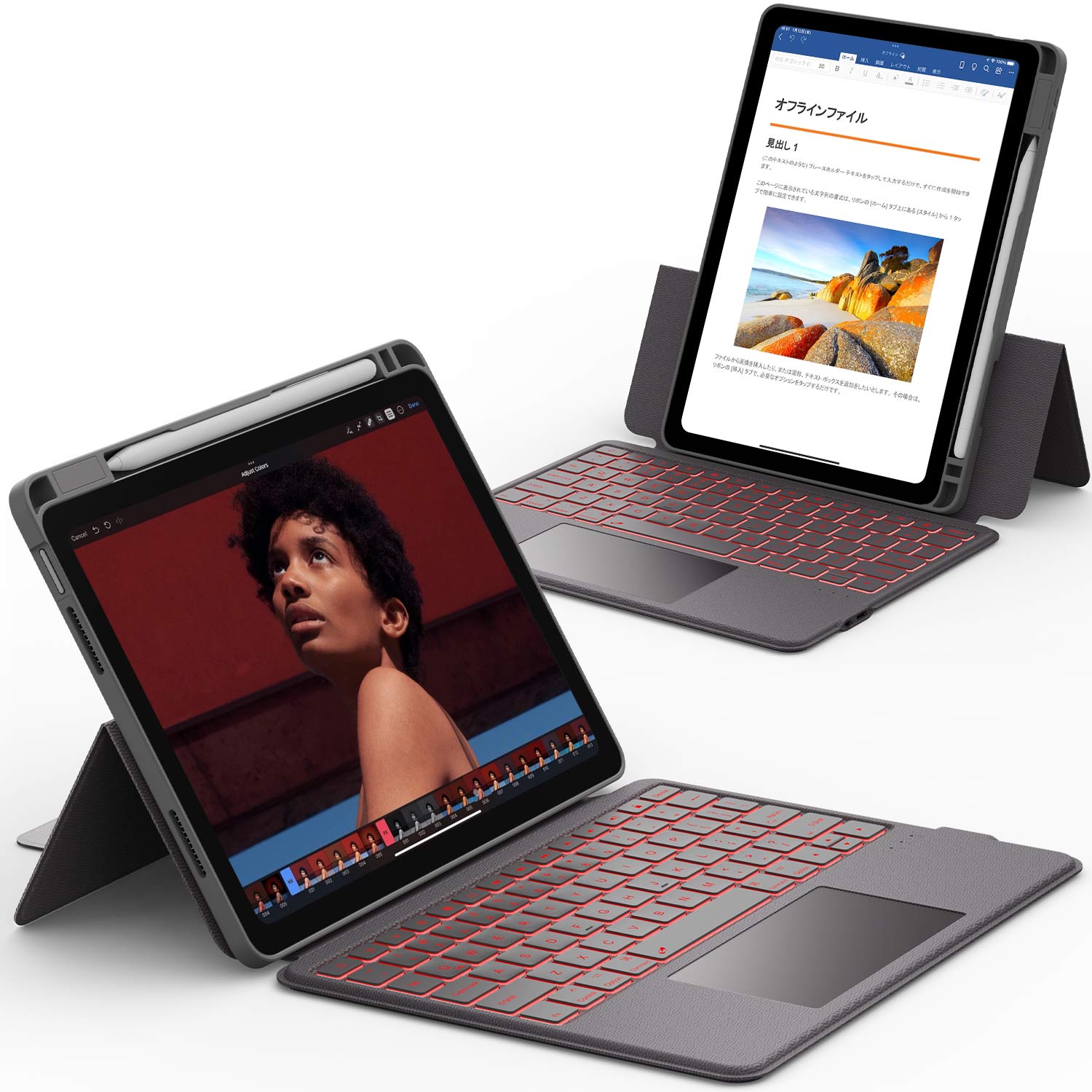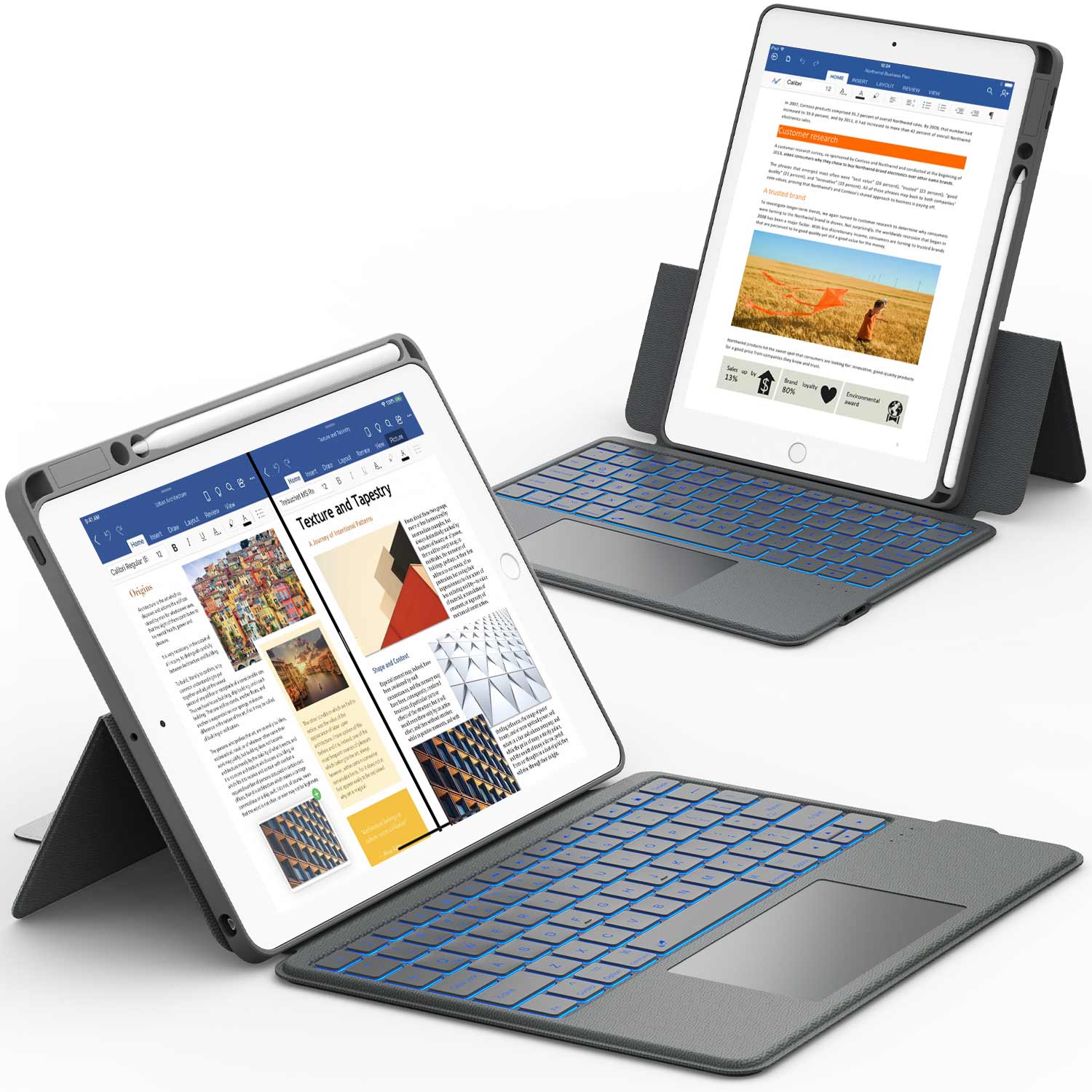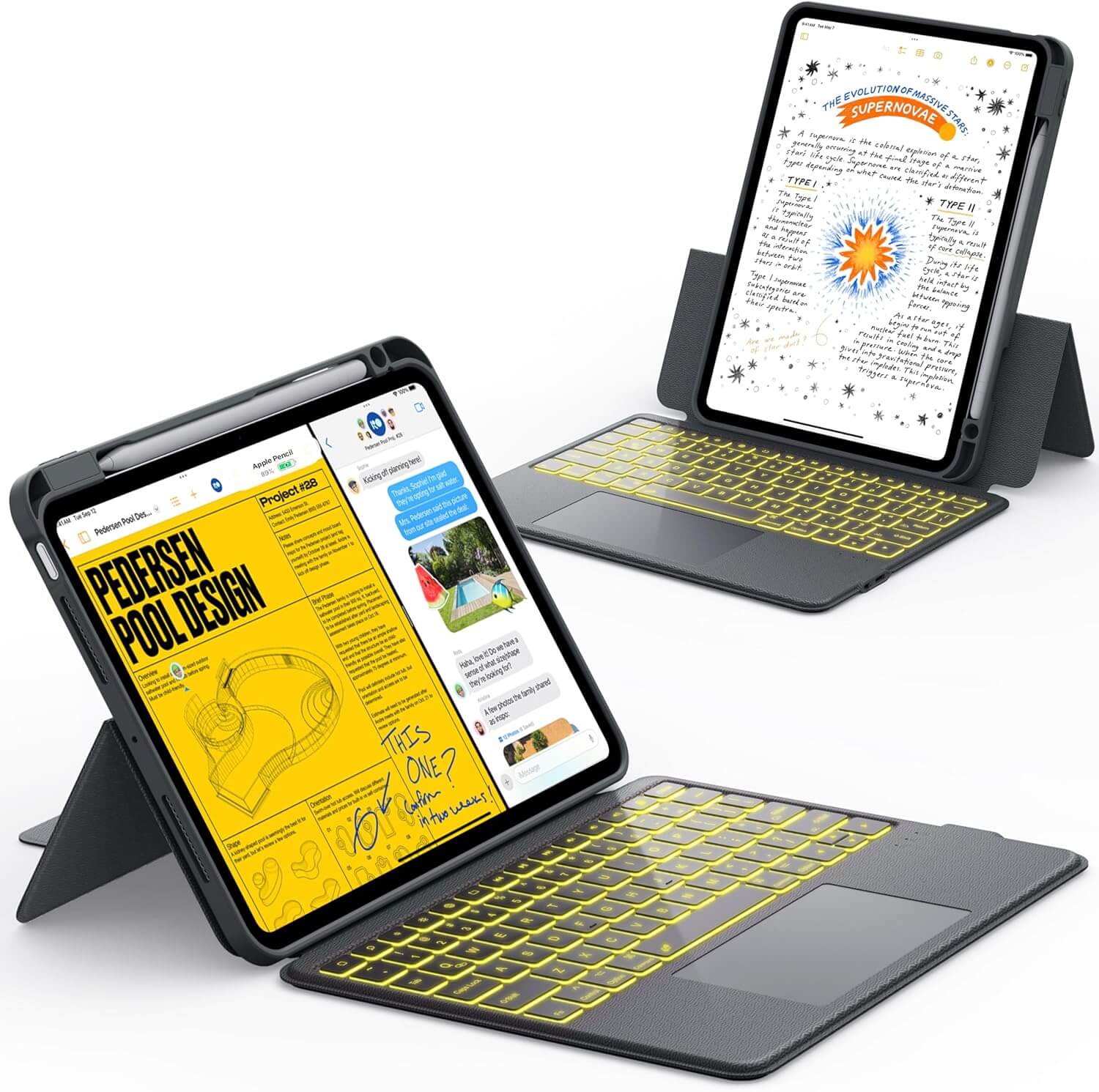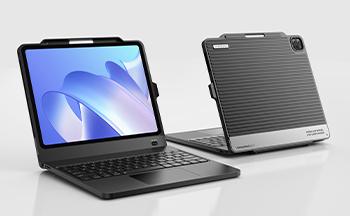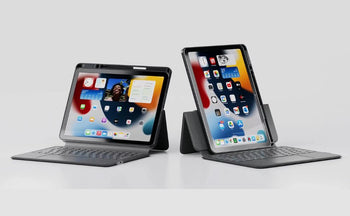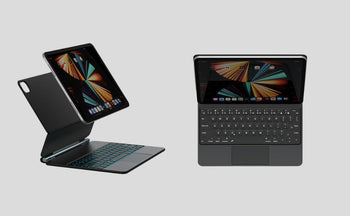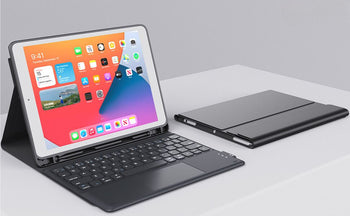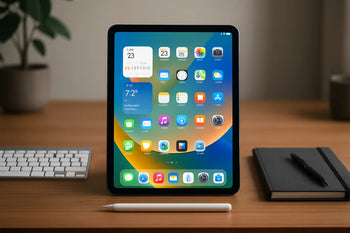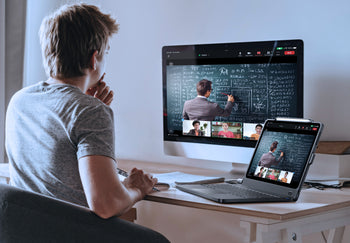Trying to find the best budget drawing tablet isn’t always straightforward. You want something good, but you don’t want to drain your wallet.
Luckily, there are a bunch of affordable options out there that actually hold up. The best budget drawing tablet gives you a smooth, responsive drawing experience for under $100. You really don’t have to spend a fortune to get a tablet that works for you.
Picking the right tablet depends a lot on your art style and what you’re willing to spend.
What Is A Budget Drawing Tablet?

A budget drawing tablet is basically a digital art device that doesn’t cost as much as the fancy models. It lets you draw, sketch, and create on your computer or tablet without emptying your bank account.
You’ll find different types out there, and they suit all sorts of skill levels and uses.
Pen Tablet Vs Pen Display Vs Pen Computer
Pen tablets have a drawing pad you plug into your computer. You draw with a stylus on the pad, and your art appears on your computer screen.
They’re usually the cheapest and work well if you don’t mind looking up at your monitor while you sketch.
Pen displays combine the pad and a screen, so you draw right on the display. It feels more natural, like drawing on paper.
These cost a bit more than pen tablets, but they’re still cheaper than full pen computers.
Pen computers are all-in-one devices with their own screen and operating system. You don’t need a separate computer to use them.
They’re the most expensive, but there are some budget-friendly models if you want everything in one portable package.
Who It’s For: Beginners, Students, Hobbyists
If you’re just starting out in digital art, a budget drawing tablet makes a lot of sense. Beginners can pick up the basics without a big investment.
Students use these for classwork or personal projects, and hobbyists get a solid tool for experimenting and practicing new styles.
Budget tablets let you experiment, improve, and just have fun without worrying about the price. Many even come with features that work well for casual or part-time artists.
Must-Have Features Under Budget

When you’re picking a budget drawing tablet, a few features really make or break your experience. Think about how the pen feels, the size of your drawing area, how you connect it, and whether it works with your software.
Pressure Levels & Pen Lag
Pressure sensitivity controls your line thickness and shading. For budget tablets, you’ll want at least 4,096 pressure levels—that’s enough for smooth, natural lines.
Pen lag is the delay between your pen movement and the line showing up. Under 20 milliseconds feels right.
If you like drawing at angles, check for tilt support—some budget tablets let you tilt up to 60 degrees, which feels more like traditional art.
Active Area Size & Resolution
The active area is just the part you can actually draw on. Medium, around 10 x 6 inches, strikes a balance between detail and desk space.
Higher resolution means your lines look crisp. Aim for at least 5080 LPI (lines per inch) so your strokes don’t get pixelated.
Smaller tablets with a 6x4 inch area are portable, but they can feel tight if you like working on detailed art.
Connectivity: USB Vs Bluetooth
Most budget tablets use USB cables—they’re stable and you don’t have to worry about charging. Just plug in and start drawing.
Bluetooth gives you wireless freedom, but sometimes you’ll get a little lag or dropped connections. Some XP-Pen models support Bluetooth, but you’ll need to charge the pen or tablet more often.
If you draw on the go, Bluetooth is handy. For home or studio work, USB is usually simpler and cheaper.
Software Support: Windows/Mac/Android
Always check if the tablet’s driver plays nice with your system. Most support Windows and Mac.
Android support is less common, but it’s becoming more popular. If you want to use your tablet with a phone or Android device, look for models that say they’re compatible.
Make sure your favorite art programs—Photoshop, Clip Studio Paint, or whatever you use—work well with the tablet’s driver.
Want to do even more with your iPad? See our tips in How to Maximize Functionality with iPad Keyboard Cases and make your setup work harder for you!
The 4 Best Budget Drawing Tablets

There are lots of budget drawing tablets with different perks. Some keep things simple and small, while others add wireless options or better pens. You’ll even find screen tablets if you want to draw right on the display.
1. Under $50: Ugee M908 – Solid Starter Darwing Tablet

If you want a good drawing tablet but don’t want to spend a lot of money, the Ugee M908 is a great pick. It costs less than $50, so it’s perfect if you’re just starting out or don’t want to spend too much.
Even though it’s small, it works really well and feels nice to draw on. The pen is very sensitive, so when you press hard or soft, your lines will look just the way you want them to.
The tablet is strong and doesn’t feel cheap, which is a nice surprise for the price. The pen doesn’t need batteries, so you never have to charge it.
You can use this tablet with lots of drawing programs, like Photoshop or Krita, and it works with Windows, Mac, and even some Android devices.
There are some buttons on the tablet that you can set up to do things like undo or zoom in, which makes drawing faster and easier. The drawing space is a bit small, so if you want to make really big or super detailed pictures, it might feel a little tight. But for doodling, sketching, or just having fun, the Ugee M908 gives you a lot for your money.
2. Under $100: XP‑Pen Deco MW – Wireless Ease

If you want a great budget drawing tablet, the XP-Pen Deco MW is a smart choice for under $100. It lets you draw without any wires using Bluetooth, or you can plug it in with a USB cable if you want. The drawing space is medium-sized, so you have enough room for bigger pictures and more details.
The pen feels nice to hold and can tell how hard you press or if you tilt it, so your lines can look thin, thick, or shaded just like real drawing. This tablet works with Windows, Mac, and even some Android devices, which is awesome if you like to use different computers or tablets.
There are some shortcut buttons on the tablet that you can set up to do things like erase or zoom in, making drawing faster and easier. The battery lasts a long time, so you don’t have to charge it all the time. For the price, it’s a really good deal!
3. Under $150: Xencelabs Small – Pro Feel, Two Pens

If you want a drawing tablet that feels really professional but still doesn’t cost too much, the Xencelabs Small is a great pick for under $150. You actually get two pens with it, and one even has an eraser on the end—something you almost never see at this price. Both pens are super accurate, so your lines and details come out just right.
The tablet’s surface has a nice texture, kind of like drawing on real paper, which makes it feel more natural. Even though it’s compact, there’s still plenty of space for detailed drawings or notes.
There are also special shortcut buttons you can set up to do things like undo or change tools quickly, which helps you work faster. The Xencelabs Small is perfect for serious hobby artists or anyone who wants a more advanced tablet without spending a lot. It gives you a lot of pro features for a budget price!
4. Screen Option: Huion Kamvas 13 – Colorful And Smooth

If you want to draw right on the screen, the Huion Kamvas 13 is a great choice. It has a 13.3-inch full HD display, so your colors and lines look bright and sharp. The screen is really smooth and shows lots of colors, making your art pop!
The pen is super precise, with 8,192 pressure levels and tilt support, so you can make thin or thick lines just by pressing harder or softer, or by tilting the pen. The screen is laminated, which means there’s hardly any gap between the pen and your drawing, so your lines go exactly where you want.
You can connect the Kamvas 13 to Windows, Mac, and some Android devices, so it works with lots of computers and tablets. If you want a tablet where you can draw right on the screen and see your art come to life with bright colors, this is an awesome budget pick!
Tablets That Do More: Drawing and Everyday Use
While these tablets are not the most budget-friendly options, they are great because you can use them for many different things—not just drawing.
If you want a device that works for art, school, games, and more, a regular tablet like the Samsung Galaxy Tab or iPad is a smart choice. These tablets cost more than basic drawing tablets, but their multipurpose features make them very convenient for everyday use.
Samsung Galaxy Tablet S10+

The Samsung Galaxy Tab is a regular tablet you can use for lots of things, like watching videos, reading, playing games, or doing homework.
If you get a model that supports the S Pen, you can also draw right on the screen using drawing apps like SketchBook or Ibis Paint.
While it might cost more than a basic drawing tablet, it’s really convenient because you only need one device for everything. You don’t have to switch between a tablet for art and another for everyday stuff.
The Galaxy Tab is a good choice if you want a tablet for both drawing and all your other needs.
iPad Pro 11

The iPad is also a great all-purpose tablet. You can use it for school, watching movies, reading books, or playing games.
If you have an Apple Pencil, you can use drawing apps like Procreate or Notes to create art right on the screen.
The iPad is a bit more expensive than some budget drawing tablets, but it’s super handy because you can do so much with it.
If you want a device that’s easy to carry and lets you draw, study, and have fun all in one place, the iPad is a smart pick.
Want some easy steps to start creating on your iPad? Dive into our guide, Master iPad Drawing: A Step-by-Step Tutorial for Newbies, and follow along!
Tablet Cases That Makes Drawing Easier
A good tablet case does more than protect your device. It can make drawing more comfortable by adding things like keyboards, stands, or pencil holders.
These extras help you stay organized and work however you like.
1. CHESONA Cloud Series Keyboard Case for Samsung Galaxy Tab
The Chesona Cloud Series case for Samsung Galaxy Tab is a smart pick for budget drawing tablets like the Galaxy Tab. Its floating keyboard makes typing easy and lights up in seven colors, which is great for working at night.
The case keeps your screen clear and protects your tablet from bumps and scratches. If you draw or take notes a lot, this case helps you work faster without blocking your view.
2. iPad 10th Gen: Chesona Steps Touch – Backlit Keyboard, Pencil Holder
The Chesona Steps Touch case for iPad 10th Gen has a backlit keyboard and a tight pencil holder. Your Apple Pencil stays put when you’re on the move.
You can adjust the keyboard lighting for dim spaces, and the case folds into different stand angles. It’s slim but still protects against drops.
3. iPad Pro/Air: Chesona Rugged – Strong Case, Trackpad, Stand
The Chesona Rugged case fits iPad Pro and Air. It’s tough, with a shell that protects from bumps and scratches.
A built-in trackpad lets you navigate fast, and it doubles as a stand with multiple angles. If you carry your tablet everywhere, this case keeps it safe and easy to use for drawing or work.
Not sure which iPad fits your style? Read Best iPad for Drawing: Match Your Art to the Right Model to find your perfect match.
Pen Display Vs Screenless Tablet
Choosing between a pen display and a screenless tablet really changes how you draw and where you work. Each has its perks, and it all comes down to what feels right for you.
Drawing Feel & Workspace Setup
With a pen display, you draw right on the screen. Your lines show up exactly where your pen touches, which feels more like traditional drawing.
Screenless tablets make you look at the monitor while drawing on the tablet. It takes a bit to get used to, but after a while, most people get the hang of it.
Screenless tablets need less desk space—just the tablet and your computer screen. Pen displays are bigger and need more room because of their built-in screens.
Portability Vs On-Screen Drawing Cost
Screenless tablets tend to be smaller and lighter. You can toss one in your bag and draw anywhere, which is pretty handy if you like changing up your workspace.
Most of these models land between $40 and $150, so they're a solid choice if you’re watching your budget.
Pen displays cost more—sometimes $400 or higher, even for the “budget” ones. You’re paying for the screen and tablet in one, which bumps up the price.
Drawing right on the screen just feels different, and if you want that, it might be worth the extra cash. You’ll avoid the weird hand-eye coordination thing you get with screenless tablets.
Pick By Your Needs & Budget
Picking a drawing tablet really comes down to what you want to make and how much you’re willing to spend. You’ve got to balance your creative goals with your wallet.
Some tablets are made for quick sketches, while others are built for more detailed, pro-level work.
Beginner Doodles Vs Art Projects
If you’re just dipping your toes in, a basic tablet with a smooth pen and easy setup makes sense. These tablets are smaller and don’t come loaded with fancy features.
They’re perfect for practicing lines and colors without a big learning curve. If you’re getting serious about art, though, you’ll want a tablet with more pressure levels, a bigger drawing area, and a pen that feels accurate.
Some tablets even have screens, so you can draw right where you see your lines. That’s a lot closer to traditional art, and it gives you more control for detailed work.
Price Tiers: <$100 • $100–250 • $250+
Under $100: These tablets are great for beginners and casual doodling. Think compact models with reliable pens—something like the Wacom One by Wacom Small or a basic Huion.
$100 to $250: Here, you’ll see bigger drawing areas and better pressure sensitivity. Sometimes you get tilt support or a faster response, which is nice for hobbyists and students. XP-Pen Artist and Huion Kamvas pop up a lot in this range.
Above $250: Tablets here usually have built-in screens, sharper resolution, and better color accuracy. If you’re aiming for pro-level work, these offer a natural feel and extras like customizable buttons or multitouch support.
|
Price Range |
Features |
Best For |
|
<$100 |
Small size, basic pressure |
Beginners, light sketching |
|
$100–250 |
Larger surface, tilt support |
Hobbyists, students |
|
$250+ |
Pen display, high accuracy |
Professionals, serious work |
Consider Extras: Tilt Support, Extras
Tilt support lets your tablet pick up on your pen’s angle, so your shading and brush strokes look more natural. If you like realistic effects or calligraphy, this is super useful.
Other extras—customizable buttons, multi-touch gestures, or a stand—can speed up your workflow. Some tablets even throw in a drawing glove or bundle in software, which is always a bonus.
If portability is your top priority, standalone tablets that work without a computer exist, but they’re pricier. Basic tablets need to connect to your PC or Mac, so double-check compatibility before you buy.
Final Thoughts
Great choice on exploring the best budget drawing tablet! Just pick whether you want a screen or not, how big you need it, and what your device connects to.
In the end, you'll have a handy tablet that feels natural, works with your gear, and lets your art live. Scroll up to pick the one that feels best in your hands and start drawing!
Once you’ve chosen your tablet, don’t forget to keep it safe and stylish. Check out tablet cases from Chesona—they offer sturdy, reliable protection and even have options with built-in keyboards to make your creative setup even better.
Looking for fun and helpful drawing apps? Discover our picks in Best iPad Apps for Tracing: Tools for Artists and Kids.
Frequently Asked Questions
What is the best budget tablet for drawing?
The best budget drawing tablet really depends on your needs and skill level. For beginners, the choose tablets that hit a sweet spot with decent screens and pen sensitivity that won’t break the bank.
Look for features like:
- At least 8192 pen pressure levels
- A screen size of 10 to 13 inches (if it has a display)
- Good compatibility with software like Photoshop or Clip Studio Paint
These specs help you draw smoothly and get nice results—without dropping hundreds of bucks.
Are drawing tablets overpriced?
Drawing tablets can seem pricey, but honestly, there are plenty of affordable models now. You don’t have to go straight for a high-end Wacom to get something decent.
Some pricier tablets add bigger screens or better color, but if you’re just starting out, you probably don’t need those. Focus on pen responsiveness and compatibility instead of bells and whistles.
What is the difference between a graphic tablet and a drawing tablet?
A graphic tablet usually means a device with no screen. You draw with a stylus on the tablet while watching your computer monitor. Wacom Intuos is a good example.
A drawing tablet (or pen display) has a built-in screen, so you draw right on what you see. It feels more natural, honestly, because your hand and eye are in sync.
Both types work, but graphic tablets are cheaper and take a bit more practice. Drawing tablets cost more, but they’re easier for most beginners to pick up.
What should I buy to start drawing?
So, you want to start drawing digitally? First, look for a tablet that matches your budget and works with your computer or device. If you’re just starting out and don’t want to spend a ton, go with a basic graphic tablet.
One more thing—make sure your tablet comes with a battery-free pen. It’s just way less hassle when you don’t have to worry about charging or swapping batteries all the time.
